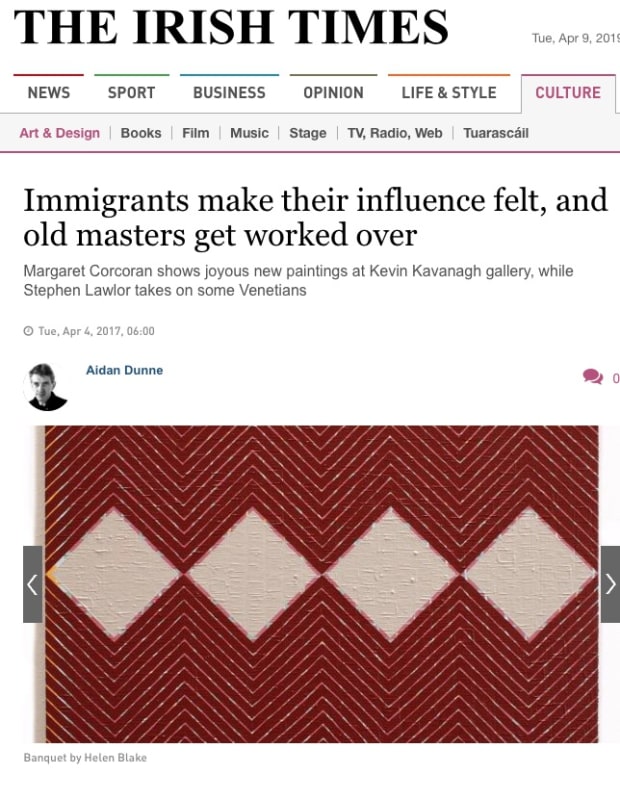Helen Blake’s dense, braided abstract compositions consist of rhythmic bands, lines and spots of coloured pigment. A painting is built up in many layers and each layer introduces a new colour. Her palette varies significantly from work to work and relatively speaking she uses a lot of colour, but always judiciously, stepping back from garish tones, developing harmonies that are sometimes obvious, often complex. While her basic language is that of geometric abstraction, she mostly departs from straightforward symmetries, letting each painting follow its own path. The layered, textured surfaces tell a tale of incremental coats of paint, varying amounts of each layer showing through until an end-point is reached.
Each layer can also establish a new regime of pattern, so that selective preservation of underlying layers can leave us with arrangements of distinctive emergent constructions. The process is meticulous, repetitive and entirely manual – no masking tape or other aids – so that patterns can drift away from strict geometries, and there is never that machined look to the edges. It’s also intuitive at every turn. Art historically, Agnes Martin is an obvious point of reference, but so too is the Swedish mystic and artist Hilma af Klint (who features in As Above, So Below, Imma’s forthcoming show on spirituality in visual art).
Modest scale
Blake’s paintings suggest connections with weaving, knitting and tapestry. In their modest scale, they seem to shy away from the assertive masculinity of much abstract painting. Which isn’t to say that she is trying to make any point here: presumably she works on a scale that is comfortable to her. Her working method generates surprising formal juxtapositions, with differing schemes of order overlapping and intersecting, sometimes to great effect, as in A prowler through the dark. On occasion, unpredictability is a tiny nuance: a single touch of colour in a corner, say, all that survives of an underlying layer. These small notes have a disproportionately strong optical effect.
Her titles, incidentally, are added after the fact. The paintings are in no sense illustrative of the titles. What we see emerges from the lengthy process of making. To describe the work as idiosyncratic may sound slightly patronising, but idiosyncrasy is integral to the process, and Blake has learned how to harness it to great effect.
Until April 11th, molesworthgallery.com

